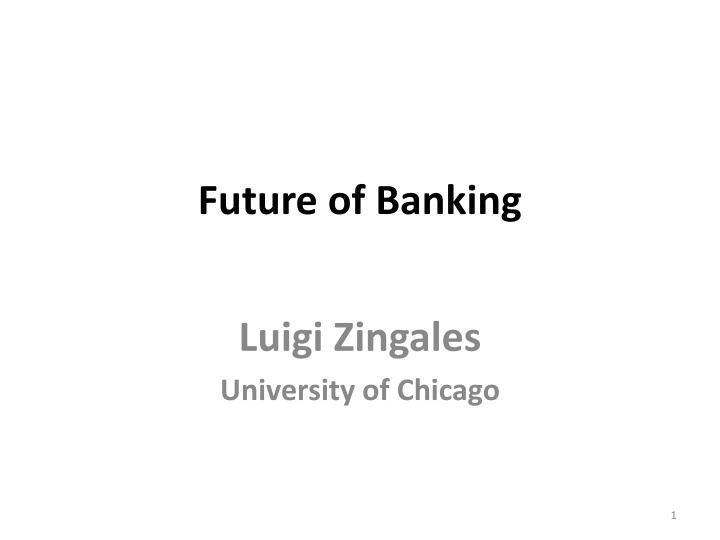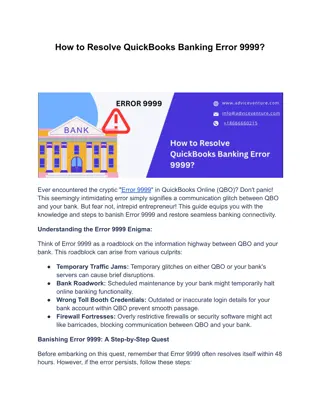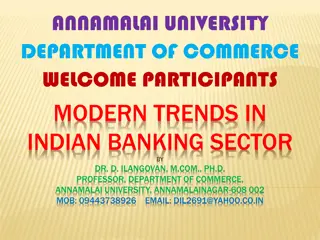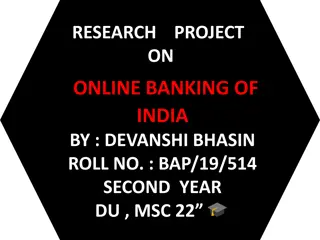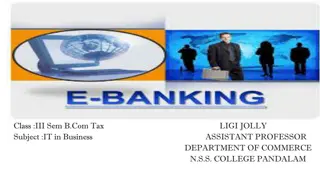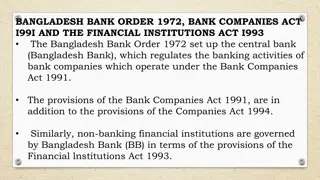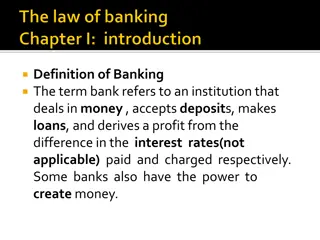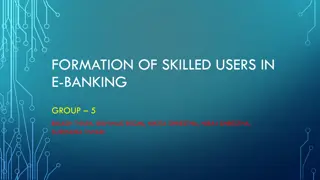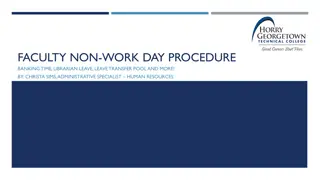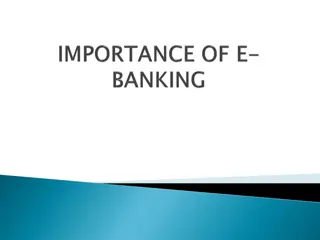Future of Banking Luigi Zingales
Explore the evolution of banks, their role in the economy, and how they have adapted to challenges over time. From Bill Gates' prediction to the significance of local branches and human capital in banking, discover the special qualities that make banks essential for payments and lending services.
Download Presentation

Please find below an Image/Link to download the presentation.
The content on the website is provided AS IS for your information and personal use only. It may not be sold, licensed, or shared on other websites without obtaining consent from the author.If you encounter any issues during the download, it is possible that the publisher has removed the file from their server.
You are allowed to download the files provided on this website for personal or commercial use, subject to the condition that they are used lawfully. All files are the property of their respective owners.
The content on the website is provided AS IS for your information and personal use only. It may not be sold, licensed, or shared on other websites without obtaining consent from the author.
E N D
Presentation Transcript
Future of Banking Luigi Zingales University of Chicago 1
The reports of my death banks are dinosaurs we can bypass them Bill Gates, Newsweek April 1995 Is this time different? 2
What Are Banks For? Banks were designed to transfer money: 1) Through space a. Cost of transportation b. Security 2) Through time (lending) a. Asymmetry of information b. Moral hazard and adverse selection 3
How did banks solve these problems? A network with local branches Branches 1. Solve the last mile problem 2. Provide barrier to entry/market power 3. Generate soft information 4. Market power on the loan market Banks are a combination of physical capital (branches) and human capital (loan officers) that take time to build 4
Global Banks Profit Breakdown By Product and Customer Segments 5
What Is Special About Banks ? Payment and lending are crucial to the functioning of an economy Banks are essential at performing these two services They cannot quickly be replaced Banks are bailed out They are allowed to capture part of the signeurage 6
Self-sustaining Scarcity of hard information makes soft/local information crucial key advantage of branches + key advantages of human capital no need to accumulate a lot of hard data 9
Number of Interactions with Main Bank Every Month By Channels 12
Self-Reinforcing Change Smartphone produce lots of hard information Banks adapt to rely more on it branches lose advantage Banks close branches thus reducing the collection of soft information 13
Death of bank tellers Death of distance Convenience is determined in terms of ease of mobile use not physical location If you base your analysis on hard information, it does not matter whether you are next door or 1000 miles away Death of loan officers Massive amount of data +AI => human expertise less important Amazon effect Free is the new cheap 14
Are Banks Still Special? 1. Payments: Cryptos provide a form of peer-to-peer payment that bypasses not only banks, but also the central bank Central banks do not want to lose control over payment More and more tempted to offer CBCD 18
Effects Benefits: Part of the government debt will be financed with CBDC instead of government bonds Elimination of the Too Big to Fail Elimination of the ZLB Costs: Risk of bank runs (if banks remain the same) Central bank would have immense power to observe and potentially to control an individual s finances Lose data synergies (if not data portability) 21
2. Lending: How to preserve lending capacity? Processing times and elasticity to demand across lender types 23
Maintaining lending capacity is not anymore keeping alive physical networks But insuring a constant match between data and capital How do you ensure it? By allocating properly the property of the data. Property of the non-anonymized data should belong to the individual and should be easily transferrable Anonymized data freely available => Marketplace lending + some rating/ service companies 25
Geopolitical Issues Ant fin. was prohibited to buy MoneyGram It bought UK-based international wire transfer firm WorldFirst It has partners in Thailand, Indonesia, the Philippines, Brazil, Argentina, India, Korea 26
Regulation as a barrier to entry Financial systems shape is influenced by the regulatory and supervisory landscape. Often, the regulatory and supervisory system is suited particularly to the incumbents. WalMart stopped from becoming a bank There are also often deep connections between key financial system players and the political system The geopolitical issues will make things worse 27
Conclusions This time is different Not only traditional banks, but traditional banking is threatened at the core The key roles in shaping the future will be played by International competition Regulation Geopolitical concerns One thing is sure Banking will not stay the same 29
